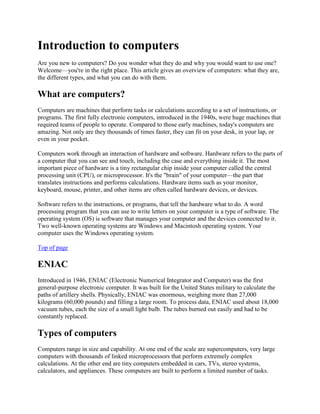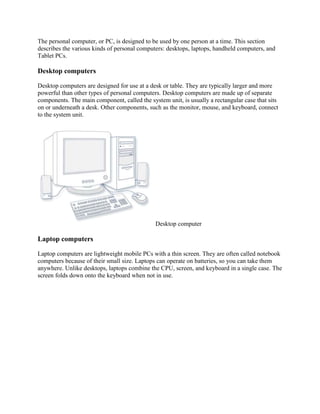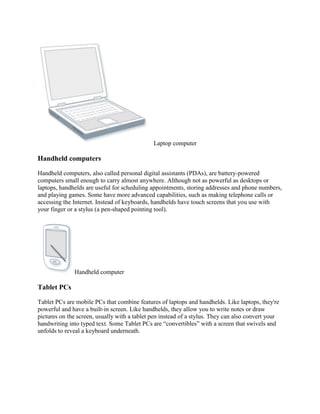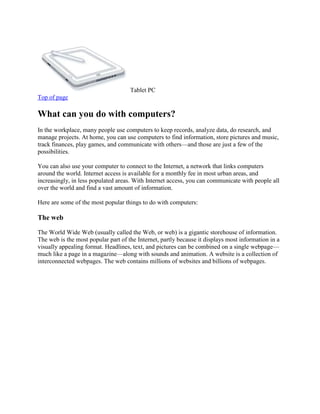This document provides an overview of computers, including what they are, their history, types, and common uses. It begins by explaining that computers are machines that perform tasks according to instructions and have evolved greatly over time. It then discusses the internal components of computers, including hardware and software. The document outlines different types of personal computers such as desktops, laptops, handheld devices, and tablet PCs. Finally, it describes some popular uses of computers like accessing the internet, emailing, gaming, and working with photos, music and videos.





